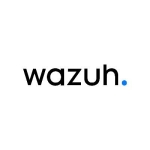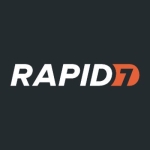
Information Security Consultant at a tech services company with 51-200 employees
Although it provides incident management of the alerts it produces, this could be improved to allow more restrictions
What is most valuable?
IBM Security QRadar has many valuable features. One of the most valuable features of IBM Security QRadar is the ease of extracting information from raw logs/events, whether the log source sending the events is supported by IBM or not (for example, a custom in-house application) and use this information in creating searches, correlation rules, reports, and dashboards. Another feature is scalability; scaling up a deployment to support more events per second is made simple just by “linking” new appliances to the main deployment through configuration steps that only take minutes to complete. I do not know if I can call this a feature, but a “general” feature of QRadar is that it does not require highly technically skilled personnel to administer. The dashboards and configurations through the web UI are easy to read, understand, and change.
What needs improvement?
Although QRadar provides incident management of the alerts it produces, this area could use a little improvement to allow more restrictions on who can close alerts and easily updating alerts with and reading text templates.
For how long have I used the solution?
I have used IBM Security QRadar for nearly two years now. I use it as a user in my organization’s Managed Security Services division where we monitor clients’ environments. I also work with it as an implementer to deploy and customize it for clients.
What was my experience with deployment of the solution?
Any deployment will have issues. The issues that I encounter with deploying QRadar are raised with IBM Support and are usually solved quickly through applying patches or changing individual files to fix the web GUI issue.
Buyer's Guide
IBM Security QRadar
April 2025
Learn what your peers think about IBM Security QRadar. Get advice and tips from experienced pros sharing their opinions. Updated: April 2025.
848,716 professionals have used our research since 2012.
What do I think about the stability of the solution?
The causes of stability issues are usually not QRadar, but of misconfigured devices/log sources (for example, sending debug events to QRadar that results in millions of events in a short period of time). However, if a deployment is done correctly, QRadar stays stable.
What do I think about the scalability of the solution?
No, I did not face issues with scalability. One of the great features of QRadar is the ease of scalability. A license upgrade is simply done by purchasing it and applying it through the GUI which only takes minutes to. If an organization wants a larger expansion, all that it has to do is to buy the required hardware with QRadar installed, and “link” it to the main deployment through steps that also take minutes. This new hardware will provide the extra events per second or flows per minute capabilities required for the expansion.
How are customer service and support?
IBM provides support in various regions in the world. The level of technical support is good. Once a support ticket is open, the support team tries to fix it directly or passes it on to higher levels, and will involve the QRadar development team if required.
Which solution did I use previously and why did I switch?
No, I did not use a separate solution, although I have read and heard about different solutions from the various clients I have met with. Clients switch to using QRadar because they say that maintaining and administering other solutions becomes a hassle and requires trained personnel. Another reason clients switch to using QRadar because of cost.
How was the initial setup?
The initial setup of QRadar is straightforward. From the installation perspective, IBM provides one ISO file that can be used to install any of the QRadar components, with the activation key deciding which components to install. From the deployment perspective, QRadar has the ability to automatically detect many log sources sending logs. The out-of-the-box dashboards, searches, reports, and correlation rules allows QRadar to start displaying intelligence and insight on devices, network statistics, authentication, and many more, and to start alerting on offenses and policy violations automatically. Coupling this with the automatically detected log sources, a demonstration of QRadar can only take a few hours from the installation, to automatically detecting a log source such as firewall logs, to getting alerts on excessive firewall denies, port scans, etc.
What other advice do I have?
The advice I would give to others is to work with the implementation team to properly fine tune the out-of-the-box “building block rules” and to enter their network hierarchy in QRadar in order for it to give best results and reduce false positive alerts.
Disclosure: My company has a business relationship with this vendor other than being a customer: We're a value added services security company that is a distributor of Q1-Labs QRadar (now IBM).
Information Security Leader at a computer software company with 1,001-5,000 employees
Manage and review incidents easily
Pros and Cons
- "The features that I have found most valuable are that it is very stable, easy to get going, and easy to manage. It is also easy to review all incidents."
- "The only problem is that if you have too many events that occur, then the storage capacity becomes a problem. We would need to increase the storage capacity."
What is our primary use case?
We use IBM QRadar for user behavior analytics and incident handling.
What is most valuable?
The features that I have found most valuable are that it is very stable, easy to get going, and easy to manage. It is also easy to review all incidents.
What needs improvement?
The only problem is that if you have too many events that occur, then the storage capacity becomes a problem. We would need to increase the storage capacity.
For how long have I used the solution?
I have been using IBM QRadar for four years.
What do I think about the scalability of the solution?
We have three customers using it and these customers have 100 to 300 users.
How are customer service and support?
Getting support sometimes takes time.
How was the initial setup?
The initial setup was quite straightforward.
We had the complete deployment and it was up and running in half a day.
What about the implementation team?
You can implement it by yourself.
What other advice do I have?
I would recommend IBM QRadar to other people who want to start using it.
On a scale of one to ten, I would give QRadar a nine.
Which deployment model are you using for this solution?
On-premises
Disclosure: I am a real user, and this review is based on my own experience and opinions.
Buyer's Guide
IBM Security QRadar
April 2025
Learn what your peers think about IBM Security QRadar. Get advice and tips from experienced pros sharing their opinions. Updated: April 2025.
848,716 professionals have used our research since 2012.
CEO at REDSHIFT CONSULTING
Very powerful with plenty of features and capabilities
Pros and Cons
- "The product has plenty of features and capabilities."
- "The usability of interfaces could be improved."
What is our primary use case?
We use this solution both in our company and those of our clients. We are resellers of QRadar.
What is most valuable?
Curator is the leader of teams in the market. It's a product with plenty of features and capabilities. It's a very powerful solution.
What needs improvement?
The usability of interfaces could be improved and the solution could have better correlation services, as well as faster and updated intelligence interfaces.
For how long have I used the solution?
I've been using this solution for five years.
What do I think about the stability of the solution?
The solution is stable.
What do I think about the scalability of the solution?
The solution is scalable.
How are customer service and support?
Technical support has room for improvement.
How was the initial setup?
The initial setup is easy.
What's my experience with pricing, setup cost, and licensing?
Licensing costs are reasonable.
What other advice do I have?
I rate the solution nine out of 10.
Disclosure: My company has a business relationship with this vendor other than being a customer:
Senior Analyst at a tech services company with 201-500 employees
We can add anything to it, as it is a good companion to other tools
Pros and Cons
- "It integrates very easily with other solutions. The solution is flexible. We can add anything to it, as it is a good companion to other tools."
- "It's user-friendly when compared to other products."
- "They should introduce some automation into the product."
- "There was some complexity in the initial setup due to bandwidth issues."
What is our primary use case?
The primary use case is for insurance and product manufacturing. We use it to create rules and Windows firewalls.
How has it helped my organization?
Before implementing this solution, we had no security. After integrating many thing, we received reports letting us know what is compromised.
What is most valuable?
It's user-friendly when compared to other products. New users can easily understand the product.
It integrates very easily with other solutions. The solution is flexible. We can add anything to it, as it is a good companion to other tools.
What needs improvement?
They should introduce some automation into the product.
For how long have I used the solution?
One to three years.
What do I think about the stability of the solution?
It has good stability. If there is an issue, we restart the box.
What do I think about the scalability of the solution?
It is easily scalable.
Our team has nine people.
How are customer service and technical support?
The technical support is good.
Which solution did I use previously and why did I switch?
Previously, I was using McAfee Nitro. Comparing with McAfee, QRadar is user-friendly and easy to use.
How was the initial setup?
There was some complexity in the initial setup due to bandwidth issues.
The implementation took two to three days.
Disclosure: I am a real user, and this review is based on my own experience and opinions.
Security Solutions Architect at Micro Strategies
It has helped us with our response time to threats
Pros and Cons
- "It showed us where weaknesses were in our environment, so we could actively target those patches first."
- "Do your research before implementing it, because it is tough to implement."
How has it helped my organization?
It has helped us with our response time to threats. It also showed us where weaknesses were in our environment, so we could actively target those patches first.
What is most valuable?
It works well with IBM products.
What needs improvement?
QRadar's issue is it needs to add behavioral analytics. The product's behavioral engine is weak. It just uses algorithms. It should an equation that is cursively applied. This will provide true behavior.
Network Breach
I have only once experienced a network breach with QRadar. QRadar detected the breach within an hour and the triage investigation took another four hours. Overall, it took about six hours to remediate everything.
Efficiency of Security Team
With QRadar, everything runs better.
What do I think about the stability of the solution?
It is a very stable product. I cannot say anything bad about it.
What do I think about the scalability of the solution?
It is very scalable. It does a good job.
How are customer service and technical support?
Their Level 1 support is weak, but the support that we worked with to set up our feature sets is good. Their Level 2 and 3 support are good to work with overall, like most companies.
We contacted their technical support about adding more feature sets. We worked with their engineers to set up the feature sets that we wanted to expand upon and deliver the product, which they did.
Which solution did I use previously and why did I switch?
We originally used ArcSight, which got cumbersome and expensive. Also, HPE ruins everything that it touches. Therefore, we moved to QRadar.
How was the initial setup?
It is a pain to set up; basically it is not that easy.
Which other solutions did I evaluate?
We evaluated LogRhythm and Splunk.
- LogRhythm had limitations.
- Splunk was never designed to be a SIEM.
What other advice do I have?
Do your research before implementing it, because it is tough to implement.
Most important criteria when selecting a vendor: support. I say this to every vendor.
It is not always about pricing, which is nice when we start, but when the crap hits the fan. I want the vendor to be there with me.
Disclosure: PeerSpot contacted the reviewer to collect the review and to validate authenticity. The reviewer was referred by the vendor, but the review is not subject to editing or approval by the vendor.
Partner at a tech services company with 1-10 employees
It has a high degree of interconnection with other systems
Pros and Cons
- "We have the abilities to monitor each instance which originates on the process along with the performance of each department."
- "For the common needs of clients to fulfill requirements, a real integration with Blueworks Live (BPA modeling tool also from IBM) and a more suitable BPM on cloud solution for midsize customers."
What is our primary use case?
- Origination process in banks.
- Insurance claims on insurance companies.
How has it helped my organization?
We are a consulting company, but our clients use it to ensure that the process has been followed. We have the abilities to monitor each instance which originates on the process along with the performance of each department. In addition, clients can enter detail in at the instance level.
What is most valuable?
- UI capabilities
- High degree of interconnection with other systems.
- The business activity monitoring on the part of the solution.
What needs improvement?
For the common needs of clients to fulfill requirements, a real integration with Blueworks Live (BPA modeling tool also from IBM) and a more suitable BPM on cloud solution for midsize customers.
For how long have I used the solution?
More than five years.
What do I think about the stability of the solution?
No stability issues.
What do I think about the scalability of the solution?
No scalability issues.
How are customer service and technical support?
The technical support is good enough.
Which solution did I use previously and why did I switch?
We previously used Oracle BPM. We switched for a BPM project with IBM, because it has a better tool at the same price level range.
How was the initial setup?
Always the sizing on any BPM project is challenging, as with any BPM tool.
What's my experience with pricing, setup cost, and licensing?
IBM is a Ferrari if you are beginning with a concept. If it will be a pilot project, take a look at Red Hat Process Automation Manager or jBPM. Be realistic about the users' quantity. A good approach would be to begin with an On Cloud subscription, then later on do a more exact sizing.
Which other solutions did I evaluate?
We evaluated Red Hat and Bonita. We now prefer Red Hat for the price.
What other advice do I have?
Ensure you have the functional skills on BPM and the technical skills on IBM BPM.
We used to be IBM partners, but are not anymore. Now, we are Red Hat partners.
Disclosure: PeerSpot contacted the reviewer to collect the review and to validate authenticity. The reviewer was referred by the vendor, but the review is not subject to editing or approval by the vendor.
Security Intelligence at a tech services company with 10,001+ employees
We can build interactive dashboards around it. Mathematical operators currently cannot be used within the reference maps.
What is most valuable?
The most valuable feature that we found, especially this year, was the ability to build apps over it. Basically, the platform has opened up and we can now customize it, as per our needs and requirements. We can build interactive dashboards and other interesting things around it.
How has it helped my organization?
We are using QRadar to solve our business problems and the IT operation requirements. We are fine tuning the processes that are laid from the InfoSec perspective, such as to detect unauthorized changes happening across the IT environment or the business problems, namely the password sharing issues, which are not easy to detect otherwise.
What needs improvement?
In future versions, the various features that we would like to see are pretty much in line with what QRadar is coming up with, like this IBM QRadar UBA version 2.0 or support for STIX/TAXII. Basically, we have similar milestones there.
There are a few technical requirements that we have opened feature requests for, such as some of our complex use cases that need mathematical operators to be used within the reference maps. That's currently not available.
What do I think about the stability of the solution?
There were no stability issues.
What do I think about the scalability of the solution?
There were no scalability issues. With this Event Processor and Data Node concept, I think it is highly scalable.
How is customer service and technical support?
We have been facing a few technical issues and we are working with the technical support and the development team to resolve them.
Sometimes we get a really good response and at times, some of the issues have been floating around for a lot of time. But our IT resources have been assigned for the same and we hope that they should be resolved easily.
How was the initial setup?
I was involved in the setup; it was pretty straightforward. Once you understand the overall architecture, it is pretty much easy to install and work upon.
What other advice do I have?
It should be implemented by the best professionals available within IBM. It is really important to have a clean base installation, so that you can build things on the top of it.
When we are selecting a vendor, first and foremost, we look for the stability of the vendor, and what level of resources they are investing in their research and development. These are a couple of things that we look for while selecting a vendor and of course, the kind of resources we are looking for to get certain engagement and make sure those resources are aligned.
Disclosure: I am a real user, and this review is based on my own experience and opinions.
Network & Cyber Security Engineer at a manufacturing company with 1,001-5,000 employees
A stable solution that comes with many search options
Pros and Cons
- "It provides many options for searching. I can see devices from different vendors, like Cisco, in one interface, which is good for me."
- "We sometimes get an error about the hard drive. Approximately once in two months, we can't find the logs, and they go missing, which is a terrible issue. We are getting support for this issue from our support company."
What is most valuable?
It provides many options for searching. I can see devices from different vendors, like Cisco, in one interface, which is good for me.
What needs improvement?
We sometimes get an error about the hard drive. Approximately once in two months, we can't find the logs, and they go missing, which is a terrible issue. We are getting support for this issue from our support company.
For how long have I used the solution?
I have been using this solution for one and a half years. We have been using this solution in our company for about four years. We have around 800 to 900 users.
What do I think about the stability of the solution?
It is very stable, but the hard drive sometimes does not have logs.
How are customer service and technical support?
IBM is always there to support us. We have no trouble with them.
We have agreements with different companies for support. They are good. For some issues, they take more time, like a day or two days.
What about the implementation team?
We have almost ten engineers for IT sites.
What other advice do I have?
I would rate IBM QRadar User Behavior Analytics an eight out of ten.
Which deployment model are you using for this solution?
On-premises
Disclosure: I am a real user, and this review is based on my own experience and opinions.
Buyer's Guide
Download our free IBM Security QRadar Report and get advice and tips from experienced pros
sharing their opinions.
Updated: April 2025
Product Categories
Security Information and Event Management (SIEM) Log Management User Entity Behavior Analytics (UEBA) Endpoint Detection and Response (EDR) Security Orchestration Automation and Response (SOAR) Managed Detection and Response (MDR) Extended Detection and Response (XDR)Popular Comparisons
CrowdStrike Falcon
Microsoft Sentinel
Splunk Enterprise Security
Elastic Security
LogRhythm SIEM
Rapid7 InsightIDR
Cortex XSIAM
Fortinet FortiSIEM
AlienVault OSSIM
Sumo Logic Security
Securonix Next-Gen SIEM
Google Chronicle Suite
Buyer's Guide
Download our free IBM Security QRadar Report and get advice and tips from experienced pros
sharing their opinions.
Quick Links
Learn More: Questions:
- Which would you recommend to your boss, IBM QRadar or Splunk?
- What SOC product do you recommend?
- Has anyone got experience in deployment of a SIEM solution?
- IBM QRadar is rated above competitors (McAfee, Splunk, LogRhythm) in Gartner's 2020 Magic Quandrant. Agree/Disagree?
- What is your opinion of IBM QRadar?
- What are the biggest differences between Securonix UEBA, Exabeam, and IBM QRadar?
- Why do most companies prefer IBM QRadar?
- What Solution for SIEM is Best To Be NIST 800-171 Compliant?
- When evaluating Security Information and Event Management (SIEM), what aspect do you think is the most important feature to look for?
- What are the main differences between Nessus and Arcsight?



















I am taking IBM Security Qradar exam c2150-400 early Aug 2015.